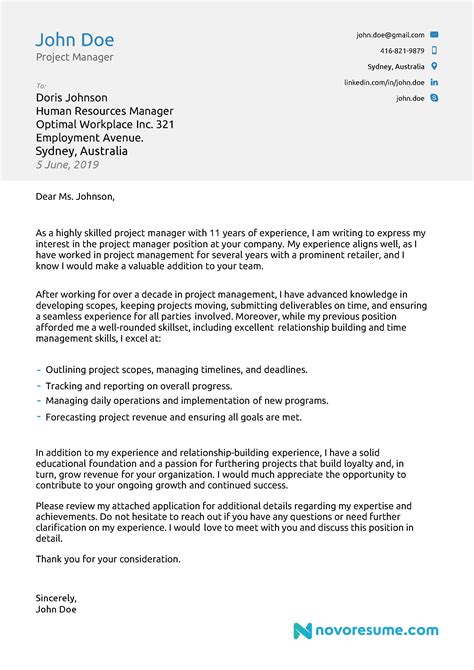Optimal Cover Letter Structure: Expert Advice In English

When it comes to applying for a job, a cover letter can be just as important as your resume. It’s your chance to introduce yourself and explain why you’re the best candidate for the position. But how do you structure your cover letter for maximum impact? In this post, we’ll provide expert advice on the optimal cover letter structure to help you stand out from the competition.
The Importance of a Strong Cover Letter
Before we dive into the details of cover letter structure, it’s important to understand why a strong cover letter matters. Your cover letter is the first impression you’ll make on a potential employer, and it can set the tone for the rest of your application. A well-written cover letter can:
- Highlight your qualifications and experience
- Showcase your personality and communication skills
- Explain why you’re a good fit for the position and the company
- Set you apart from other candidates
The Optimal Cover Letter Structure
Now that you understand the importance of a strong cover letter, let’s take a closer look at the optimal cover letter structure:
1. Heading
Your cover letter should begin with a heading that includes your name, address, phone number, and email address. You can also include the date and the recipient’s name and address if you have it.
2. Salutation
Next, address the recipient with a formal greeting such as “Dear Hiring Manager” or “Dear [Company Name] Recruiter.” If you don’t know the recipient’s name, you can use a general salutation such as “To Whom It May Concern.”
3. Introduction
In the first paragraph of your cover letter, introduce yourself and explain why you’re writing. Mention the position you’re applying for and where you found the job listing. You can also briefly mention your qualifications and experience.
4. Body Paragraphs
The body of your cover letter should be two to three paragraphs that expand on your qualifications and experience. Use specific examples to demonstrate how your skills and experience make you a good fit for the position and the company. You can also address any potential concerns the employer may have, such as a gap in your employment history or a lack of experience in a certain area.
5. Closing Paragraph
In the final paragraph of your cover letter, summarize your qualifications and express your enthusiasm for the position. Thank the employer for considering your application and indicate that you look forward to the opportunity to discuss your qualifications further. You can also provide your contact information and indicate your availability for an interview.
6. Closing Salutation
End your cover letter with a formal closing such as “Sincerely” or “Best regards,” followed by your name.
FAQs
What should be included in a cover letter?
A cover letter should include a heading, salutation, introduction, two to three body paragraphs, a closing paragraph, and a closing salutation.
How long should a cover letter be?
A cover letter should be one page or less. Use concise language and specific examples to make your point.
Should I address my cover letter to a specific person?
If possible, address your cover letter to a specific person. If you don’t know the recipient’s name, you can use a general salutation such as “To Whom It May Concern.”
What should I include in the body of my cover letter?
The body of your cover letter should expand on your qualifications and experience. Use specific examples to demonstrate how your skills and experience make you a good fit for the position and the company. You can also address any potential concerns the employer may have.
How should I end my cover letter?
In the final paragraph of your cover letter, summarize your qualifications and express your enthusiasm for the position. Thank the employer for considering your application and indicate that you look forward to the opportunity to discuss your qualifications further. You can also provide your contact information and indicate your availability for an interview.
Should I include my contact information in my cover letter?
Yes, include your contact information in your cover letter so that the employer can easily reach you. Include your name, address, phone number, and email address.
Conclusion
A well-written cover letter can make all the difference in your job search. By following the optimal cover letter structure outlined in this post, you can create a cover letter that showcases your qualifications and experience and sets you apart from other candidates. Good luck!
